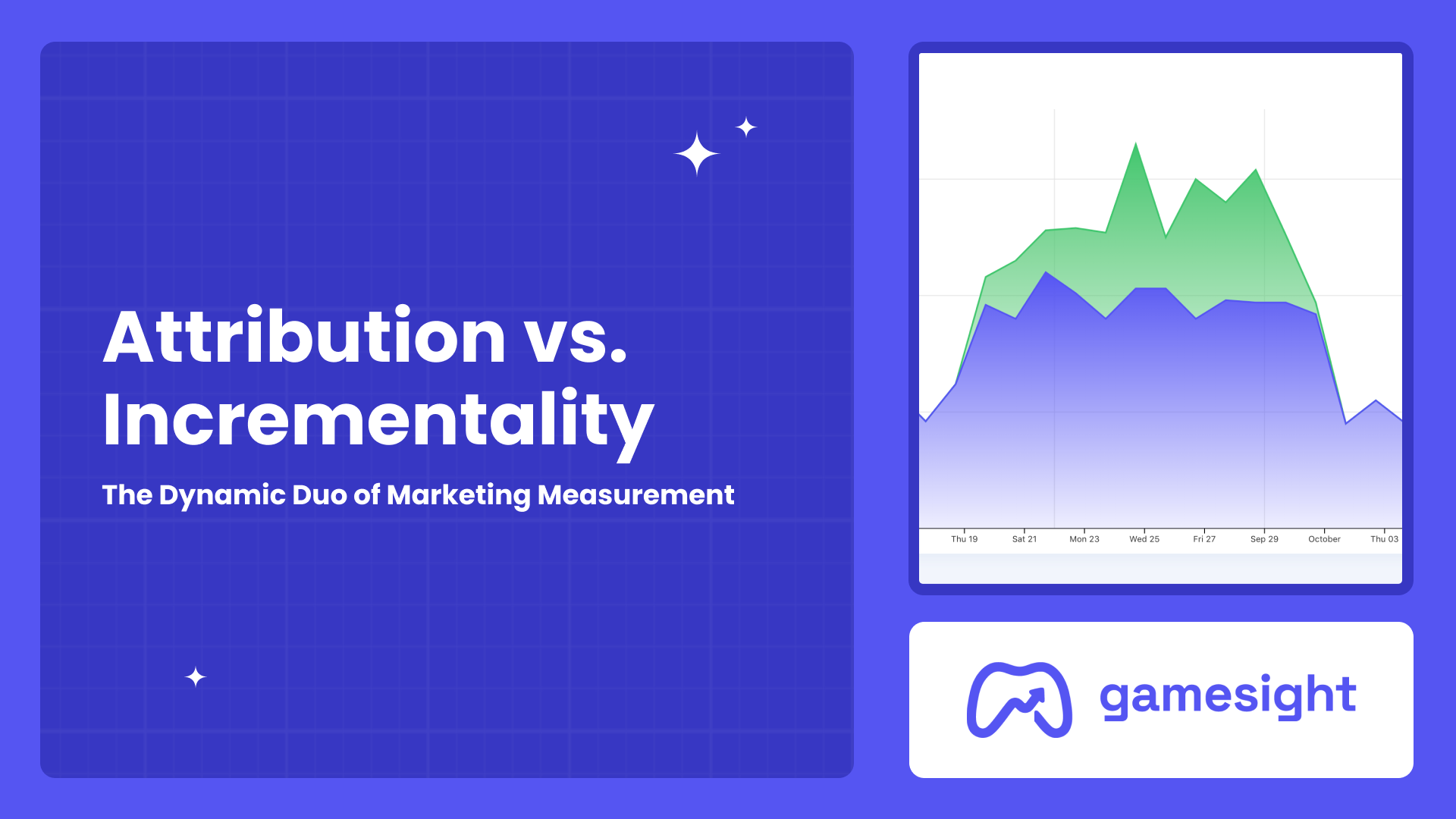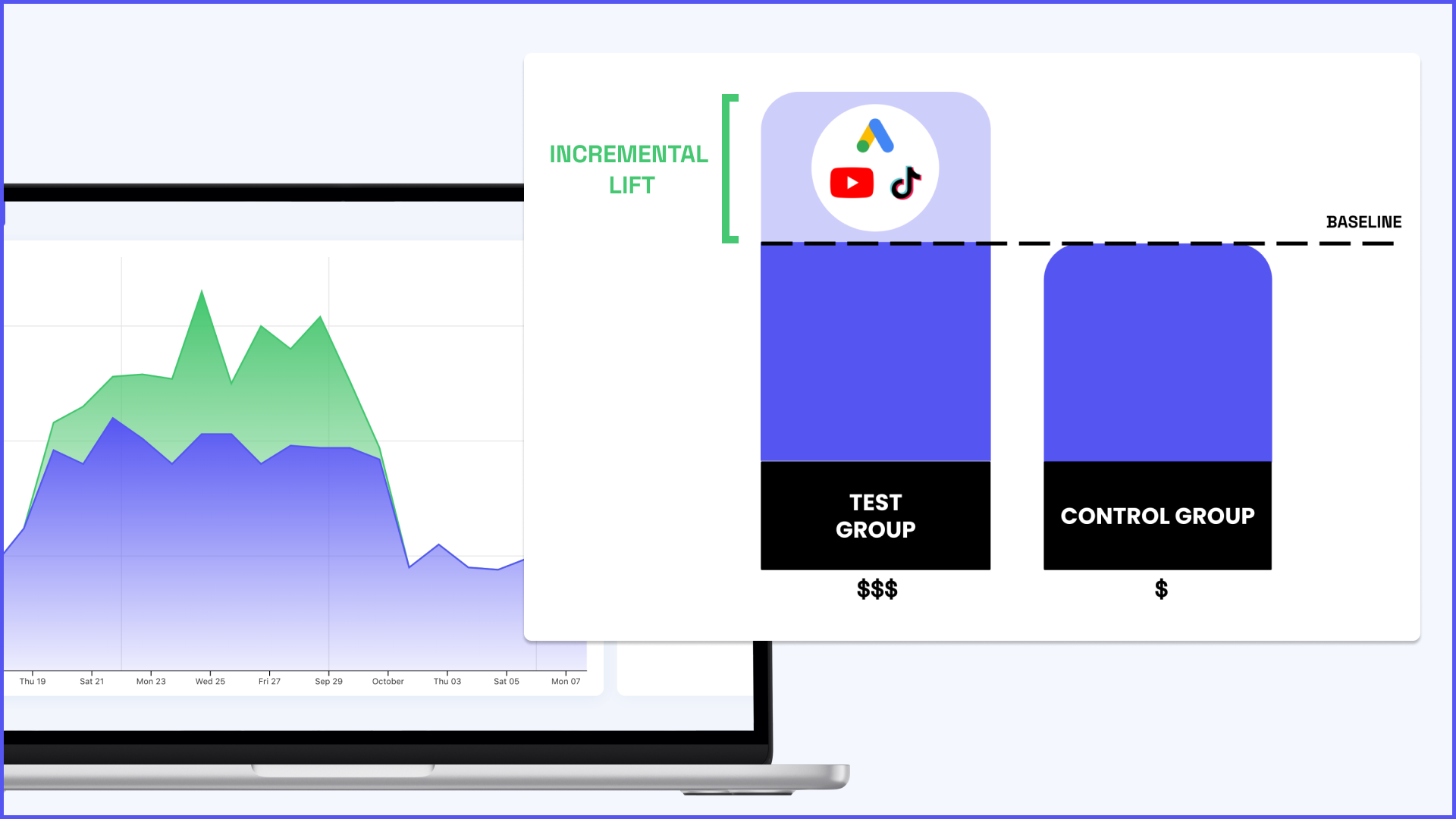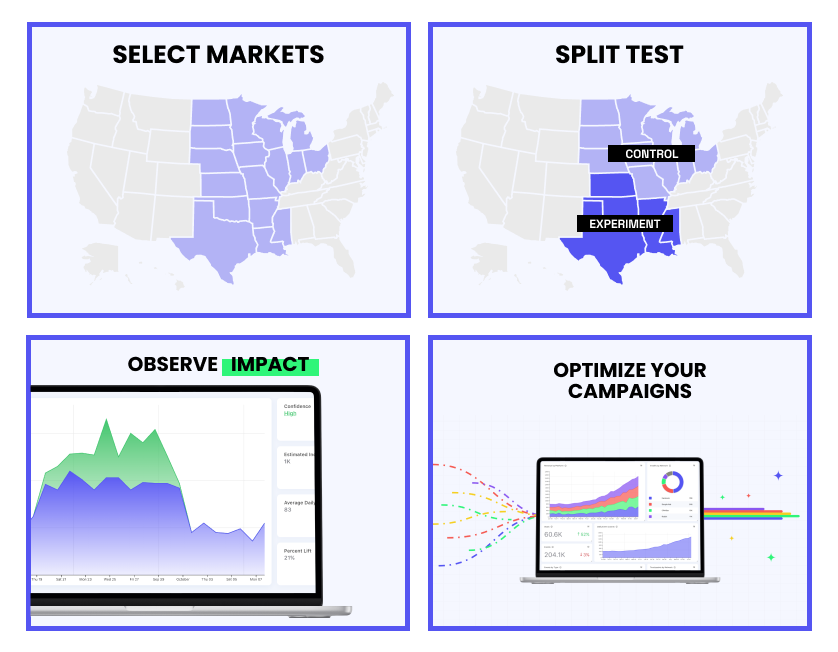Attribution vs. Incrementality: The Dynamic Duo of Marketing Measurement

To demonstrate the true value of your marketing campaigns and optimize them for peak performance, it's essential to leverage the right measurement tools. This article dives into two key methodologies—attribution and incrementality—both offering unique insights on their own into the effectiveness of your marketing efforts. When used together, they provide a comprehensive view of your campaign impact, empowering you to make more informed, data-driven decisions.
What is Attribution?
Attribution is the process of matching player interactions with your ads to player behavior in your game. It’s a valuable tool that helps you understand which channels and campaigns are driving conversions. By analyzing these interactions, you can optimize your campaigns to target the right audiences and allocate your budget more effectively.
Key Benefits:
- Granular Insights: Attribution provides detailed data on player interactions, allowing you to see which channels, campaigns, and even specific ads are most effective.
- Fast Feedback: It delivers near real-time insights, enabling quick adjustments to campaigns based on performance.
- Ad Spend Optimization: Enables fine-tuned targeting and ad spend by providing ad networks with conversion data, informing them of which audiences or creatives are most effective.
- Comprehensive player Journey Tracking: Captures multiple touchpoints along the player journey, offering a broad view of channel contributions.
Limitations:
- Correlation, Not Causation: Attribution shows correlations, but it can’t tell you if players would have installed your game without seeing the ad.
- Complexity: attribution is an extremely difficult thing to build on your own (without a partner like Gamesight)
- Privacy: requires player-level data processing, more subject to changes in regulation, etc.
- Channel Bias: Attribution models can over emphasize the importance of certain channels that are often used by players who already have intent to play your game. For example, brand keyword search ads often appear to be performing very well from a pure attribution perspective.
What is Incrementality?
Incrementality measures the true causal impact of your marketing campaigns. It answers the critical question: how many new players installed the game because of the campaign, beyond what would have happened organically?
To determine this, “match-market incrementality” testing is a split-test comparison between two similar geographic markets—one that receives the marketing campaign and one that doesn’t. Matched market split tests are valid for any regionally targeted marketing initiative, whether you're running on-console banners, social media retargeting campaigns, or even metro station takeovers.
Why is this important? The key to accurate incrementality testing lies in market selection and defining a baseline. These are the hardest parts of the process because they require advanced statistical analysis and are subject to many influences and variables. Running successful incremental lift experiments requires that the groups being compared are truly similar, so any differences in performance can be confidently attributed to the campaign. Without careful market selection and a well-defined baseline, the results could be misleading.

🗝️ Key Concepts Explained:
- Match Market Incrementality is a method of measuring the impact of a marketing campaign by comparing results between a test market (with the campaign) and a control market (without it).
- Market Selection: Picking similar areas or groups to compare in a marketing test. It helps ensure that any changes are due to the campaign, not other behavioral differences.
- Baseline: A benchmark of typical performance, set before any new marketing actions. This serves as the basis for measuring the campaign’s added value.
- Lift: The added value from the campaign, seen as the difference in results between the test group and control group. This metric highlights the campaign’s specific impact after a controlled experiment.
Example:
If you run an ad campaign on Facebook, attribution might show tens of thousands of installs following the campaign, but were those installs truly driven by your ads? Incrementality can help you determine whether those installs would have occurred, even without the campaign, giving you a more accurate measure of your campaign’s impact.

Key Benefits:
- Causal Insights: Provides a clearer causal analysis, showing how many conversions were directly driven by your marketing.
- Accuracy in ROI Measurement: Offers a more accurate picture of return on ad spend (ROAS) by revealing the actual revenue lift generated by your campaign
- Effective Budget Allocation: Helps in allocating your budget to strategies that truly drive growth.
- Complementary to Attribution: Refines and validates your marketing strategy when used alongside attribution.
Limitations:
- Less Granularity: Incrementality measures the joint impact of all of your marketing efforts and doesn’t provide the same level of line-item level insights as attribution.
- Longer Feedback Loops: Requires weeks or months to gather meaningful data, resulting in slower feedback.
- Limited Simultaneous Testing: You can generally only run one incrementality test at a time, limiting the ability to test multiple variables or channels concurrently.
- Costs: Incrementality testing can be expensive, requiring significant investment to achieve meaningful results. Additionally, it is often complex to execute, typically necessitating the expertise of a data analyst to ensure accurate and actionable insights.
Knowing when to look beyond Attribution
Attribution is a powerful tool for tracking player interactions and understanding which channels are driving conversions. However, there are critical moments when attribution alone isn't enough, and you need to look beyond it to incrementality:
- Proving Causal Impact:
Attribution shows which channels are clicked or viewed prior to conversion, but it doesn't tell you if those players would have converted anyway. Incrementality reveals the true lift caused by your marketing. - Measurement Beyond Ad Clicks
Some types of marketing efforts aren’t easily measurable through user-level attribution. Influencer campaigns, out-of-home (OOH), or even impression measurement on traditionally restrictive ad networks are opportunities for incremental measurement. - Privacy-safe
Data sharing for user-level measurement can be challenging for some organizations. Running A/B tests with an ad network often means sharing sensitive PII. Attribution requires using user-level data for matching. Incremental measurement can work with aggregate data and doesn’t require data sharing with ad networks – a much safer option for publishers with highly restrictive privacy standards. - Optimizing Between Key Campaign Beats:
For GaaS (Games as a Service) titles, the value of incrementality testing lies in optimizing evergreen campaigns. Since marketing for GaaS is often continuous, incrementality can be applied during quieter periods between key beats (e.g., DLC launches). These in-between windows offer an ideal opportunity for matched-market tests without impacting major promotional moments, allowing insights to be gathered that can then be applied to drive more efficient spend and engagement during larger, high-stakes campaigns.
Why Use Both Together?
Attribution and incrementality are complementary tools that, when used together, provide a comprehensive understanding of your marketing efforts. Attribution delivers detailed, player-level insights into which campaigns drive in-game behavior, making it ideal for optimizing campaigns with fast or automated feedback loops. It allows you to compare targeting, creative, and channels to ensure your budget is focused where it has the highest impact.
Incrementality, on the other hand, helps you understand whether a channel—or even your entire marketing strategy—is driving an overall return. Since many users see ads without clicking, incrementality testing—such as match market testing for networks lacking impression tracking (e.g., Facebook and Google Ads)—reveals the true lift your marketing generates beyond organic behavior. Incrementality demonstrates the causal impact of your marketing efforts by measuring lift over your organic baseline.
Most providers only offer either attribution or incrementality, not both, meaning you need two separate tools, which can be costly and complex to manage. However, Gamesight uniquely integrates both solutions into one platform, simplifying the process and reducing costs. This dual approach allows you to confidently allocate resources, validate your strategies, and achieve a deeper understanding of how each component of your marketing contributes to overall growth. The combination of user-level attribution and incrementality enhances marketing insights and drives better decision-making for long term growth.
Take the Next Step:
Reach out to your Gamesight representative today to learn how Incrementality can help you make more data-driven marketing decisions.

